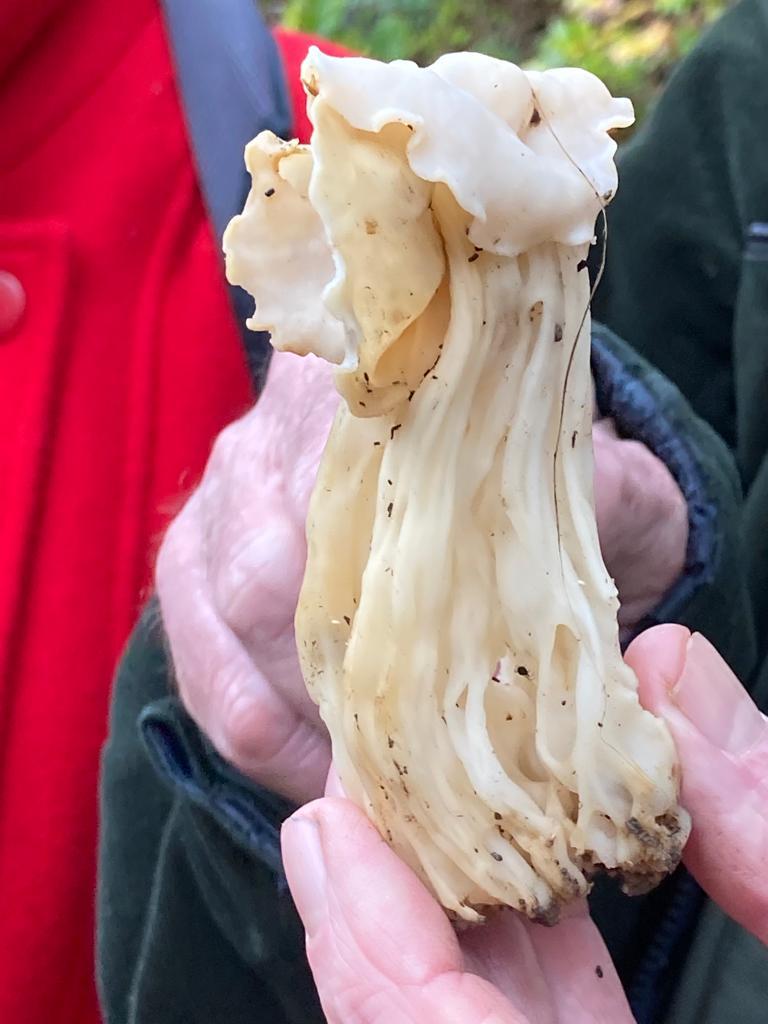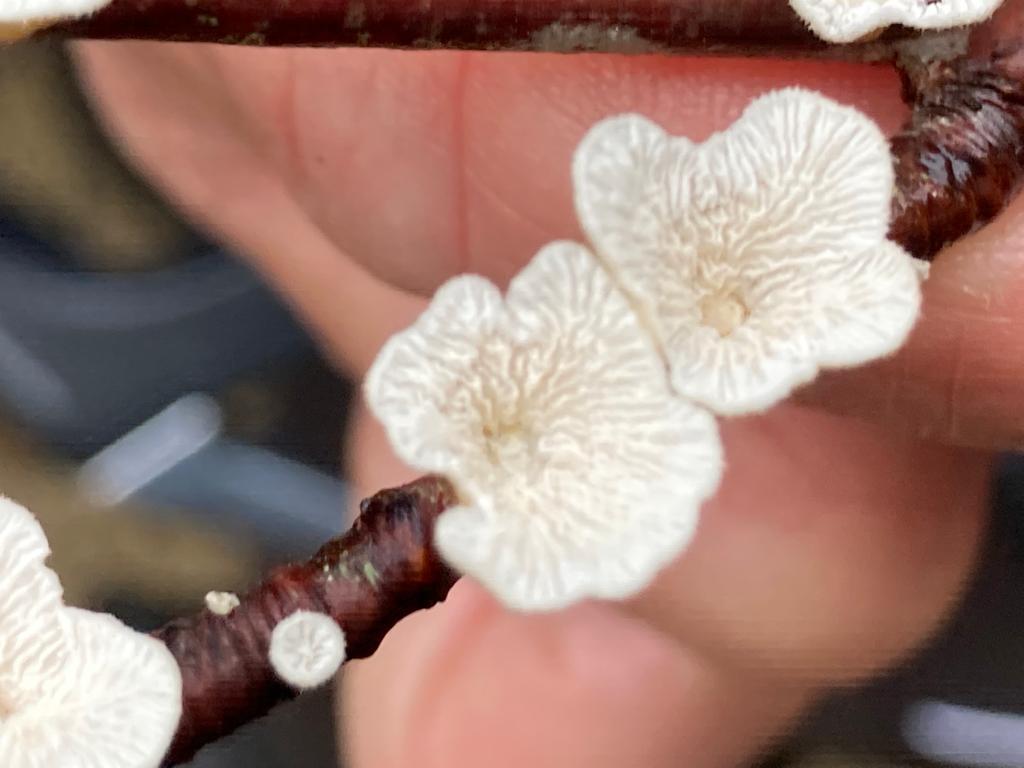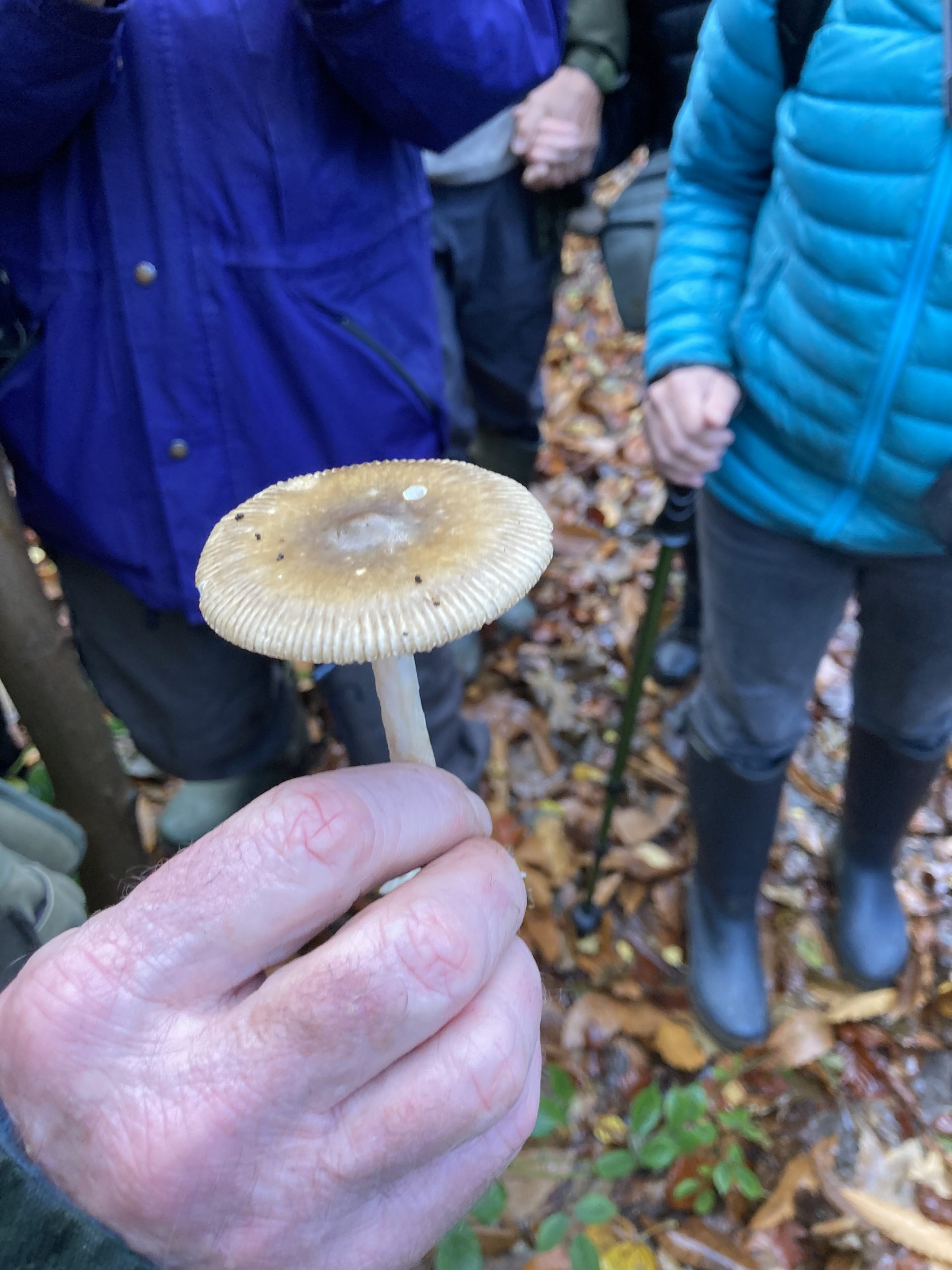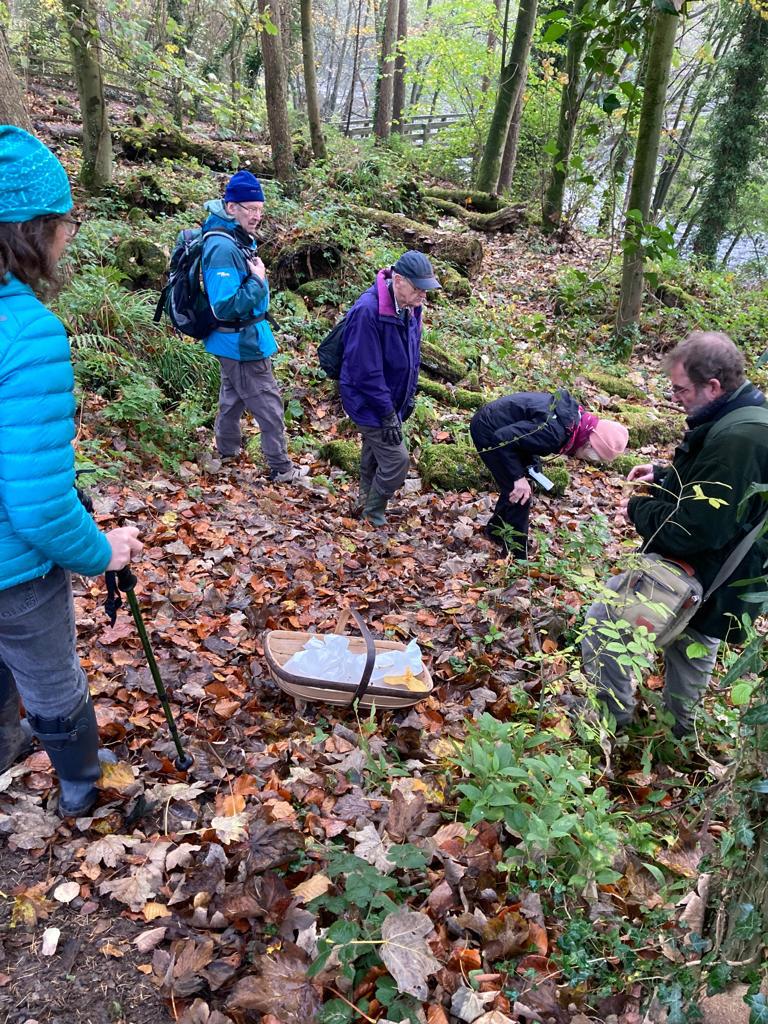The pall of cloud that had blighted the previous day (bonfire night) had lifted and there was a promise of a brighter morning as we gathered with mycologist Andy Woodall in the Woodland Trust’s Nidd Gorge car park on Ripley Rd. Rain threatened but held off until our lunch break and the mood among the 22 participants was eager and undaunted.
As we descended the forestry track towards the river Andy began to point out the fruiting bodies of fungi barely visible beneath the layer of fallen autumn leaves. Throughout the walk he revealed the various methods involved in fungus identification – sniffing, tasting (with extreme caution), turning the specimen upside down to examine the gills, cutting in half, peeling, scratching and scoring. Colour, shape and texture are also important. Often the spores need to be examined under a microscope, back home. Even carving a simple funny face on the surface helps determine its identity.
Soon everyone got the hang of seeking out fungi along our route which took us across the footbridge, heading upstream a little way, then downstream. The woodland landscape around us came under our collective scrutiny and this yielded around 46 species of brackets, bonnets, brittle gills, crusts, puffballs etc (see Andy’s Fungus Foray list).
Along the way, tiny sooty black stems of Candlesnuff Xylaria hypoxylon, with their barely visible white branched tips, cropped up frequently on dead wood.
Here and there, Crimped Gill Plicatura crispa resembled springtime blossom on bare twigs.
On a culinary note, some of the edible varieties we found, namely Chicken of the Wood Laetiporus sulphureus (unappetising remnants only and it’s not a fungus suited to everyone’s digestive system) and Penny Bun (Boletus edulis) were both past their best. Ominously, the cep’s neighbour on the river bank was being parasitised by the Bolete Eater Hypomyces chrysospermus. The rather large specimen of the rosey-purply blushed “Plums and Custard” Tricholomopsis rutilans looked like a feast but is, alas, inedible.
The True Artist’s Bracket Ganoderma applanatum, with the galls of the Yellow Flat-footed Fly Agathomyia wankowiczii visible on the underside, got a lot of attention, and it was with this fungus that Andy demonstrated how you could carve a funny face on the underside. The drawing survives the drying out of the fungus. Another fungus, Bleeding Broadleaf Crust Stereum rugosum, does actually ooze red and blood-like when slashes are made across the surface.
The Birch Bracket Fomitopsis betulina is a useful fungus to find if you are off-grid. Andy explained that it could be used to sharpen blades, staunch blood and is good as tinder to light fires. Its medicinal properties are being investigated. It was carried by Otzi, the Iceman in the Alps, possibly as a treatment against worms. One of our Fungus Foragers managed to make a creditable ‘plaster’ out of the skin to wrap around her finger.
The highlight of the day was the rare Amanita umbrinolutea which doesn’t have an English name, other than it is a Grisette, part of the Amanita family. Having examined it at home Andy said:-
“The Amanita is only the second Yorkshire record. It’s complicated but on the BMS database it’s lumped with another species. If they get to split this would be the first Yorkshire record!”
Many, many thanks to our guide, Andy Woodall, for sharing his knowledge and expertise once again with us. Also a big thanks to Persephone, from the Midlands Fungal Group, who accompanied him and shared her knowledge and enthusiasm. All in all it was a delightful field trip.
Charlotte Fox




